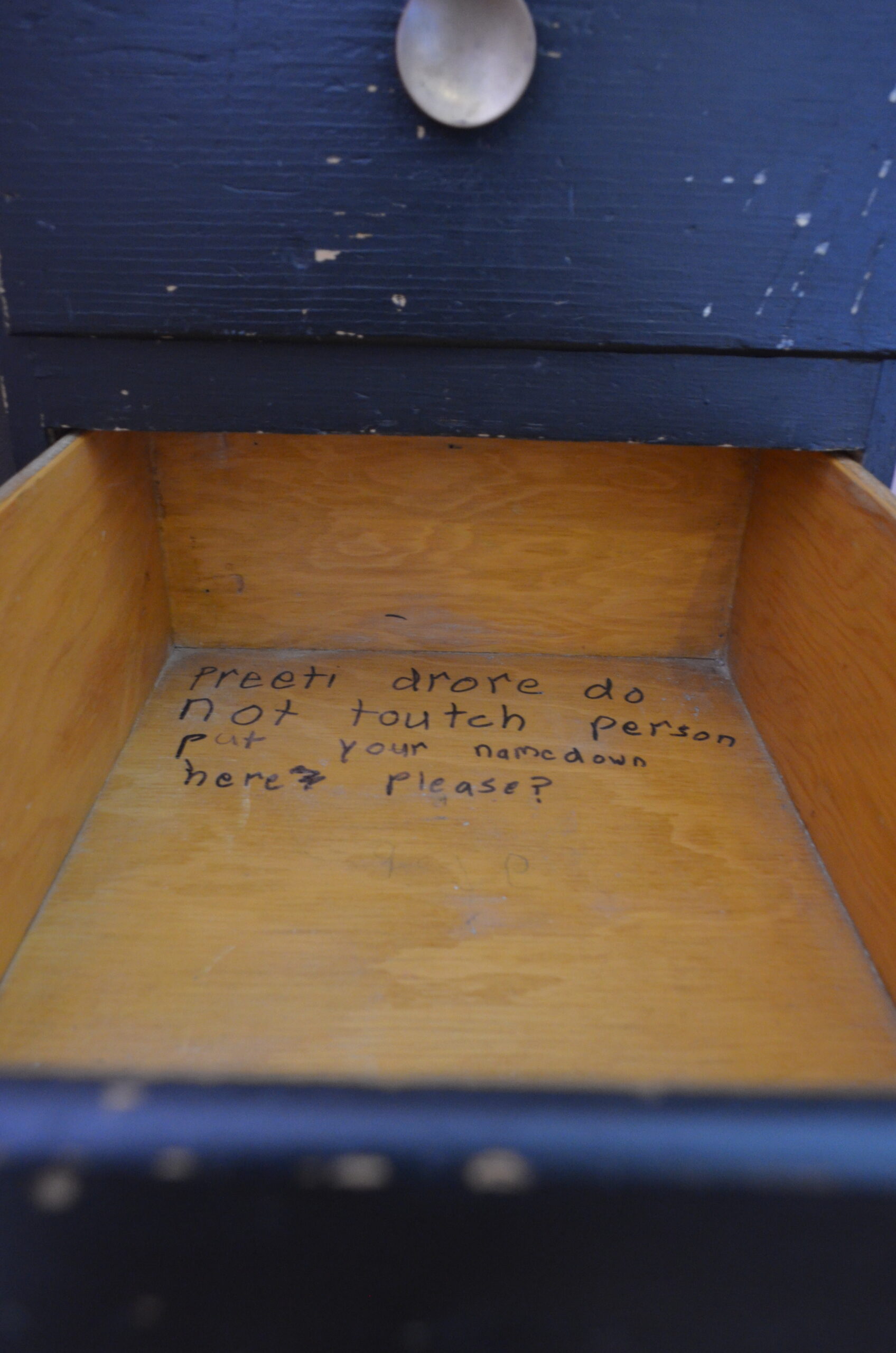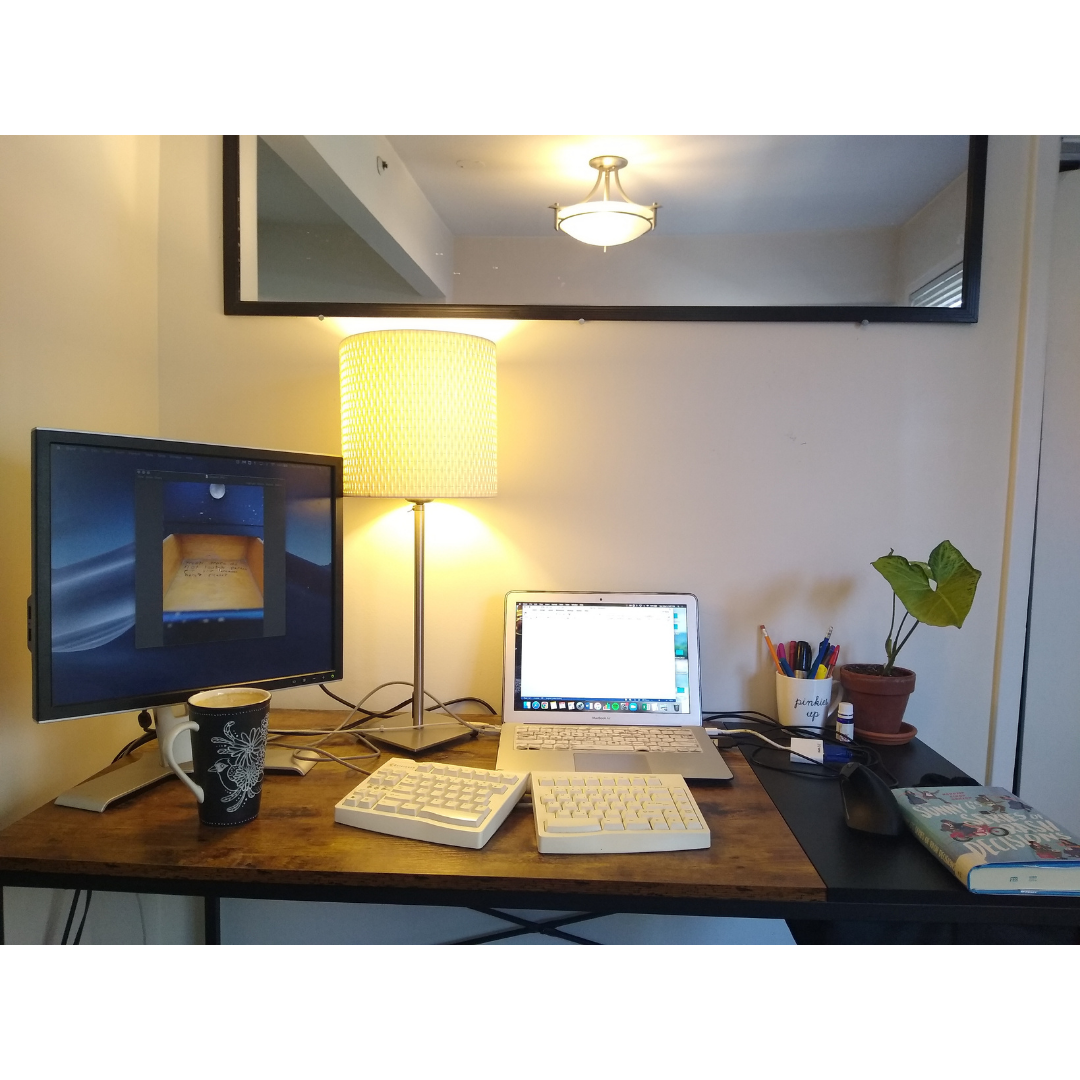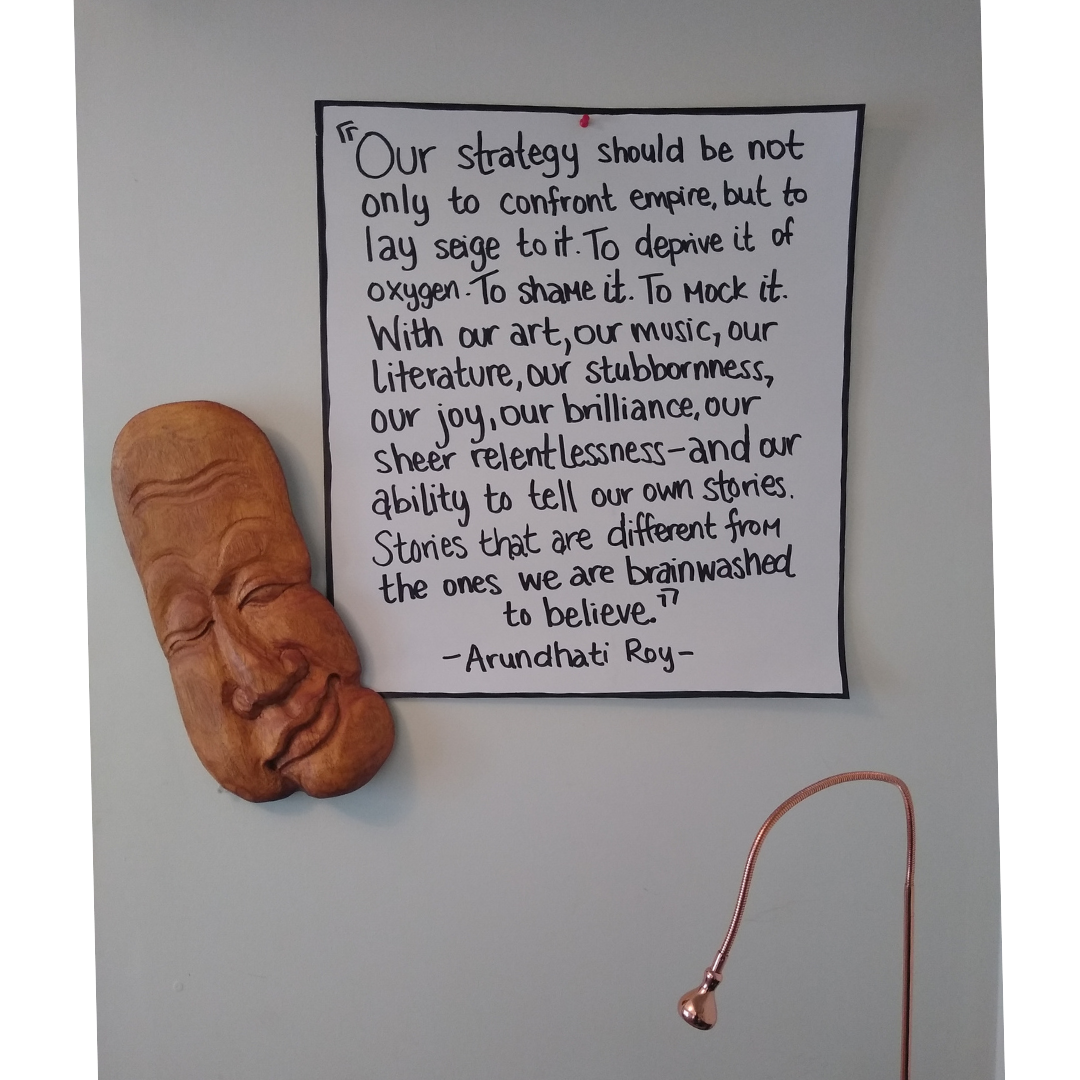Preeti Kaur Dhaliwal’s Writing Space
By Preeti Kaur Dhaliwal
How to Make a Desk Feel Like Home
The writing desk I miss most is the one I sold for $50 when I moved to Tkaronto in 2017. I posted it on Craigslist and sold it to a German guy who had just moved to Commercial Drive. My Shavinder Auntie gave me that desk when I was six: wood with drawers up and down each side, brass knobs and a long compartment across the top. Soon after receiving it, I wrote a warning inside with permanent marker: “Preeti drore do not toutch person put your name down here please?”—I’m still a woman who often desires in inconsistencies.
I painted that desk black the summer before Grade 5, the month I moved from a Punjabi immigrant neighbourhood to a primarily white one that never felt quite as good. The desk moved with me everywhere I went in BC (except my father’s house) and stayed at my mother’s when I lived in Quebec, England, Singapore and Ontario, until 2017 when my mother said she didn’t want to store it anymore. Now she misses that desk too.


When I arrived deskless in Roncesvalles at the start of my MFA (we’re jumping to 2018), my friend Damian gave me his desk from college. He’d been saving it in storage for over a decade. It had a drawer on one side with open space beneath, like an exposed cupboard. It also had a keyboard tray which I adored: ergonomic keyboards are medicine for pained wrists just as gifted desks are medicine for struggling writers.
A few months after the pandemic started, I moved back west to care for a sick family member in their home. I brought boxes and books but no big furniture. Now I miss Damian’s desk too. But nostalgia does not a writing surface make, so I searched the basement for something that could. I found the wood top of a desk from the 90s and the filing cabinets it once rested on, but not the legs that would’ve lifted everything off the ground and held it together. My solution was to place the cabinets on two sturdy side tables from the 80s with the 30lb slab of wood on top of that and call it a standing desk until, six months later, I found an old kitchen table top, four rusting legs and some mismatched screws.
When I moved into my current rental, the first thing I did was map out three distinct writing spaces (with potential for one more). The first—for journaling and generative writing—is in the kitchen where the morning light hits best. Here, I perch on a stool with three legs (one shorter than the others, stabilized by folded cardboard and masking tape). Next, I have a circular table that straddles the space between my kitchen and living room; a typewriter sits nearby should I feel like pounding something out (there really is nothing better than hearing a typewriter clank beneath your fingers when you’re fired up, whether the fire is inspired by flow and creativity or injustice and rage). And finally, I have a desk without drawers but a top that opens (which, let me tell you, isn’t very useful when you have things piled on top. It becomes the place you keep things you don’t need to look at often but want to keep safe: important but not secret). This last desk is where I work: where I edit, mark, Zoom, teach, craft emails, draft poetry and prose.


With all my moving, I’ve had to figure out how to quickly make any desk feel like home. For me, two things are key:
- Comfort and ergonomics: ergonomic keyboard and mouse, foot stool, a seat wide enough to sit cross-legged but also tall enough to support my back, and an extra screen that lets me see big letters without leaning so far down and forward that I can’t write again the next day.
- What surrounds it: on a nearby wall, I keep an Arundhati Roy quote that reminds me why I write and why I facilitate space for others to write. On my current desk’s surface, I keep an arrowhead plant, some lavender oil, sometimes a candle, always a cup filled with highlighters and pens, usually tea or a glass of water (sometimes a whiskey), my laptop (plus the above-mentioned ergonomic additions) and a lamp for extra light. None of these devices are Bluetooth so there are a lot of wires, but a warm bulb and the right beverage can still create sufficient romance.
My desks change as frequently as my living space (which is more often than I’d like), but maybe writers don’t need a consistent desk. I write where I am, on whatever surface allows. Before covid, I wrote in cafes. Sometimes on the bus. For a few stolen minutes, in any and all of my jobs. Now, I work from home and steal time from myself, longing for summer and patios, persuading myself that three desks and a typewriter is enough. And for now, it is.
Preeti Kaur Dhaliwal (she/her) is a critical race feminist, writer, lawyer, college prof and facilitator. She is currently working on a novel and a poetry collection, while teaching and facilitating. She holds an MFA from the University of Guelph and her creative writing has appeared in PRISM international, Looseleaf, We Were Not Alone: A Community Building Art Works Anthology, The New Quarterly, The Fiddlehead and alt. theatre, amongst other publications.
Photo by Sixteen Miles Out on Unsplash.

